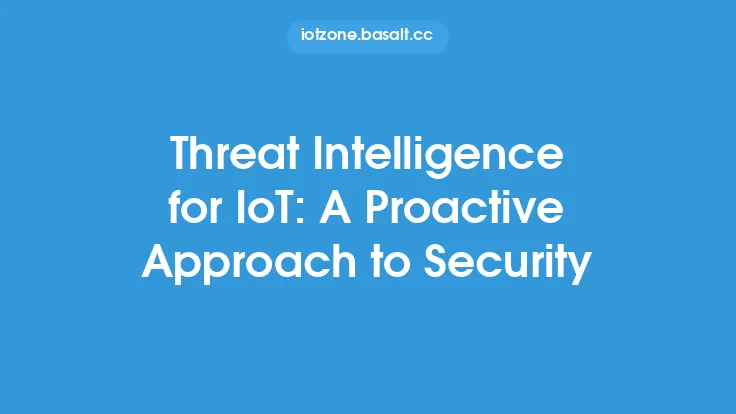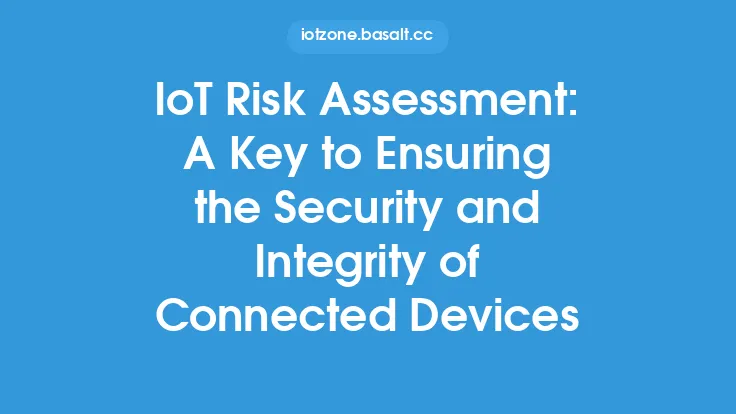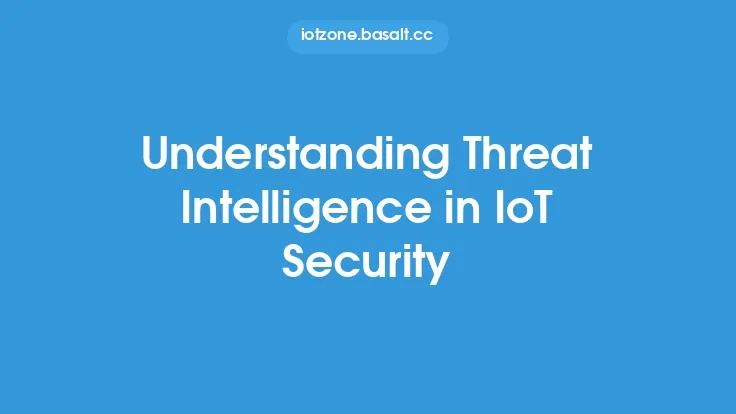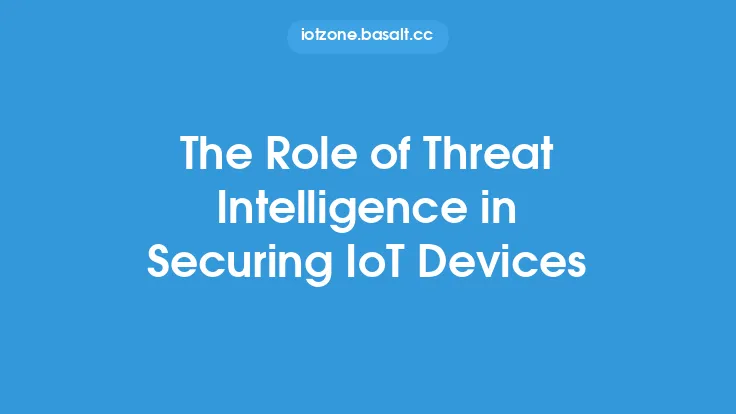The increasing number of Internet of Things (IoT) devices has led to a significant rise in the attack surface, making it a challenging task for security teams to protect these devices from various threats. IoT devices are being used in various industries, including healthcare, finance, and manufacturing, making them an attractive target for attackers. To combat these threats, organizations are turning to threat intelligence as a key component of their IoT security strategy. Threat intelligence involves collecting, analyzing, and disseminating information about potential or actual threats to help organizations make informed decisions about their security posture.
What is Threat Intelligence in IoT Security?
Threat intelligence in IoT security refers to the process of gathering, analyzing, and sharing information about potential or actual threats to IoT devices and systems. This information can include data on known vulnerabilities, malware, and attack patterns, as well as information on emerging threats and trends. The goal of threat intelligence is to provide organizations with the information they need to stay ahead of threats and protect their IoT devices and systems from attacks.
How Threat Intelligence Works in IoT Security
Threat intelligence works by collecting data from a variety of sources, including network traffic, system logs, and threat feeds. This data is then analyzed using advanced algorithms and machine learning techniques to identify patterns and anomalies that may indicate a threat. The analyzed data is then shared with security teams, who use it to inform their security decisions and take proactive measures to protect their IoT devices and systems. Threat intelligence can be used to identify vulnerabilities, detect malware, and prevent attacks, as well as to inform incident response and remediation efforts.
Benefits of Threat Intelligence in IoT Security
The use of threat intelligence in IoT security provides several benefits, including improved incident response, enhanced risk management, and better security decision-making. By providing security teams with timely and relevant information about potential threats, threat intelligence enables them to take proactive measures to protect their IoT devices and systems. This can include patching vulnerabilities, implementing security controls, and monitoring for suspicious activity. Threat intelligence can also help organizations to reduce the risk of a breach, as well as to minimize the impact of a breach if one does occur.
Types of Threat Intelligence in IoT Security
There are several types of threat intelligence that can be used in IoT security, including strategic, tactical, and operational threat intelligence. Strategic threat intelligence provides high-level information about threats and trends, and is used to inform long-term security planning and strategy. Tactical threat intelligence provides more detailed information about specific threats and vulnerabilities, and is used to inform security operations and incident response. Operational threat intelligence provides real-time information about threats and vulnerabilities, and is used to inform security monitoring and incident response.
Sources of Threat Intelligence in IoT Security
Threat intelligence can be gathered from a variety of sources, including open-source intelligence, commercial threat feeds, and internal security data. Open-source intelligence includes information that is publicly available, such as threat reports and vulnerability disclosures. Commercial threat feeds provide real-time information about threats and vulnerabilities, and are often gathered from a variety of sources, including network traffic and system logs. Internal security data includes information that is gathered from an organization's own security systems and devices, such as network traffic and system logs.
Challenges of Implementing Threat Intelligence in IoT Security
Implementing threat intelligence in IoT security can be challenging, particularly for organizations that are new to threat intelligence. One of the biggest challenges is gathering and analyzing the large amounts of data that are required to provide effective threat intelligence. This can be time-consuming and resource-intensive, and may require significant investment in personnel and technology. Another challenge is integrating threat intelligence into existing security systems and processes, which can be complex and require significant customization.
Best Practices for Implementing Threat Intelligence in IoT Security
To get the most out of threat intelligence in IoT security, organizations should follow several best practices. These include gathering data from a variety of sources, using advanced analytics and machine learning to analyze the data, and integrating threat intelligence into existing security systems and processes. Organizations should also prioritize threats based on risk and likelihood, and use threat intelligence to inform security decision-making and incident response. Additionally, organizations should continuously monitor and evaluate their threat intelligence program to ensure that it is effective and providing value.
Future of Threat Intelligence in IoT Security
The future of threat intelligence in IoT security is likely to be shaped by several trends, including the increasing use of artificial intelligence and machine learning, the growth of the IoT, and the evolving threat landscape. As the IoT continues to grow and evolve, threat intelligence will become even more important for protecting IoT devices and systems from attacks. The use of artificial intelligence and machine learning will also become more prevalent, enabling organizations to analyze larger amounts of data and identify threats more quickly and accurately. Additionally, the threat landscape will continue to evolve, with new threats and vulnerabilities emerging all the time, making it essential for organizations to stay ahead of threats and protect their IoT devices and systems.





